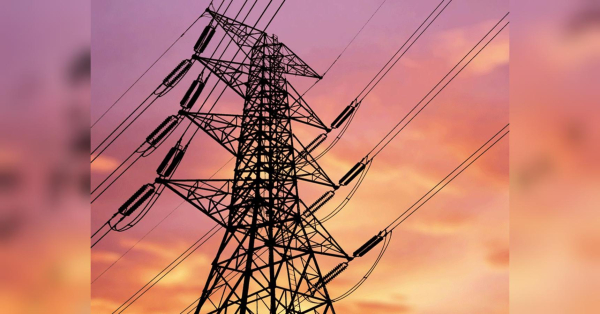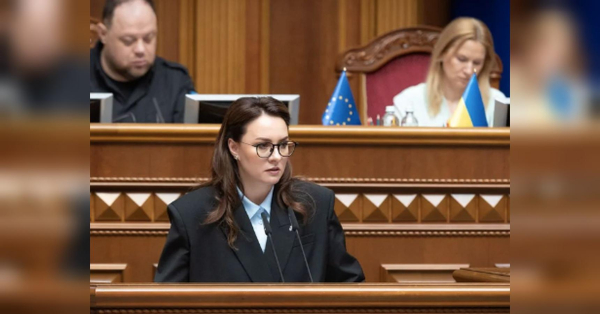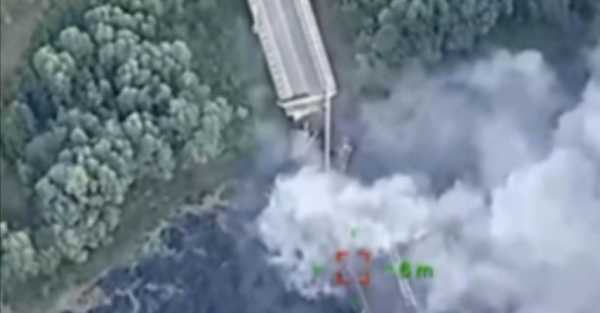
Ukraine has destroyed a key bridge in Russia’s Kursk region and struck a second one nearby, less than two weeks into its stunning cross-border incursion, disrupting Russian supply routes and possibly signalling that its troops are planning to dig in.
Russia’s pro-Kremlin military bloggers have acknowledged the destruction of the first bridge, which spanned the Seim River near the town of Glushkovo, will impede deliveries of supplies to forces repelling Ukraine’s incursion, although Moscow could still use pontoons and smaller bridges in the area.
Ukraine’s air force chief, Lieutenant Mykola Oleshchuk, on Friday released a video of a Ukrainian air strike that split the bridge in two.
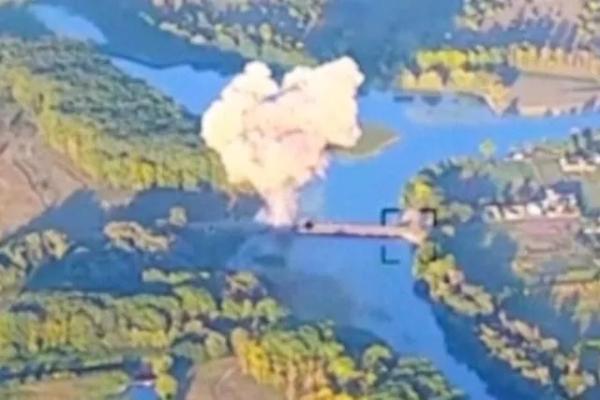
Less than two days later, Ukrainian troops hit a second bridge in Russia, according to Mr Oleshchuk and the Russian regional governor, Alexei Smirnov.
As of Sunday morning, there were no official reports on where exactly the second bridge attack took place. Russian Telegram channels claimed a second bridge over the Seim, in the village of Zvannoe, had been struck.
According to Russia’s Mash news site, the attacks left the area with just one intact bridge. If confirmed, the Ukrainian strikes would further complicate Moscow’s attempts to replenish its forces in Kursk and evacuate civilians.
Glushkovo lies 7.5 miles north of the Ukrainian border, and about 10 miles north-west of the main battle zone in Kursk. Zvannoe is located a further five miles north-east.
Kyiv has been tight-lipped about the planned scope and goals of its lightning push into Russia, the largest attack on the country since the Second World War, which took the Kremlin by surprise and saw scores of villages and hundreds of prisoners fall into Ukrainian hands.
The Ukrainians drove deep into the Kursk region in several directions, facing little resistance and sowing chaos and panic.
Ukraine’s Commander in Chief, General Oleksandr Syrskyi, claimed last week his forces had advanced across 390 square miles of the Kursk region, although it was not possible to independently verify what exactly Ukrainian forces effectively control.
But the strikes on bridges, apparently aimed to stymie a Russian counter-push in Kursk, could mean Kyiv intends to seek a foothold in the region – or at least signal to Moscow that it plans to do so.
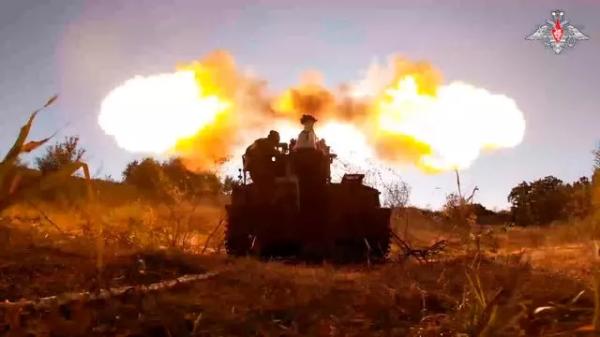
Analysts say that although Ukraine could try to consolidate its gains within Russia, it would be a risky move given Kyiv’s limited resources, because supply lines extending deep into Kursk would be vulnerable to Russian strikes.
The incursion has already boosted Ukraine’s morale, sapped by a failed counter-offensive last summer and months of grinding Russian gains in the eastern Donbas region, and proven its ability to seize initiative.
It has resembled Ukraine’s lightning operation from September 2022, led by Mr Syrskyi, in which its forces reclaimed control of the north-eastern Kharkiv region after taking advantage of Russian manpower shortages and a lack of field fortifications.
Ukrainian President Volodymyr Zelensky has urged Kyiv’s allies to lift the remaining restrictions on using Western weapons to strike targets deeper in Russia, including in Kursk, saying his troops could deprive Moscow “of any ability to advance and cause destruction” if granted sufficient long-range capabilities.
He said on social media site X: “It is crucial that our partners remove barriers that hinder us from weakening Russian positions in the way this war demands.
“The bravery of our soldiers and the resilience of our combat brigades compensate for the lack of essential decisions from our partners.”
Russia’s Foreign Ministry and pro-Kremlin bloggers have alleged US-made HIMARS launchers have been used to destroy bridges on the Seim. These claims could not be independently verified.
Ukraine’s leaders have repeatedly sought authorisation for long-range strikes on Russian air bases and other infrastructure used to pummel Ukraine’s energy facilities and other civilian targets, including with retrofitted Soviet-era “glide bombs” that have laid waste to Ukraine’s industrial east in recent months.
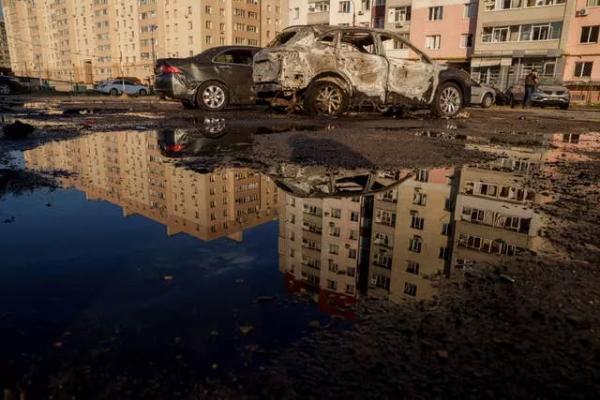
Moscow also appears to have dialled up attacks on Kyiv, targeting it with ballistic missiles for a third time this month early on Sunday, according to the head of the municipal military administration.
Serhii Popko said in a Telegram post that the “almost identical” August strikes on the capital “most likely used” KN-23 missiles supplied by North Korea.
A further attempt to target Kyiv followed at around 7am local time, Mr Popko said, this time launching Iskander cruise missiles.
He said Ukrainian air defences struck down all targets fired in both attacks on the city on Sunday morning.
In a separate development, the head of the UN nuclear watchdog said the safety situation at the Russian-occupied Zaporizhzhia Nuclear Power Plant is deteriorating following reports from its team of a nearby drone strike.
Rafael Grossi, director of the International Atomic Energy Agency, issued a statement on Saturday evening calling for “maximum restraint from all sides” after an IAEA team stationed inside the plant reported an explosive carried by a drone detonated just outside its protected area.
According to Mr Grossi’s statement, the impact site was “close to the essential water sprinkle ponds” and about 100 metres from the only power line supplying the plant. The statement added that the IAEA team has reported intense military activity in the surrounding area in the past week, including near the plant.
Kyiv and Moscow have traded blame for a string of attacks in the vicinity of the power plant since it was captured by Russian forces after the full-scale invasion, including a fire at the facility last weekend. Mr Grossi’s statement said the blaze had caused “considerable damage” but posed no immediate danger to nuclear safety.
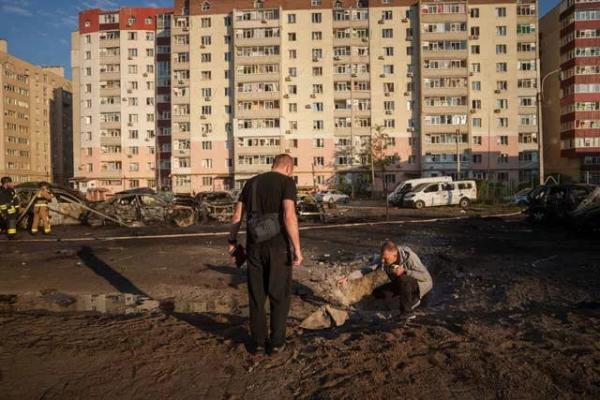
Ukraine has repeatedly alleged that Russia plans to stage an attack and blame Ukrainian forces.
Last summer, Mr Zelensky warned of possible explosives he said Moscow may have planted on the plant’s roof to blackmail Ukraine.
Meanwhile, Russian ally Belarus has massed “nearly a third” of its army along its border with Ukraine, according to authoritarian President Alexander Lukashenko.
Mr Lukashenko told Russian state TV that Minsk was responding to the deployment of more than 120,000 Ukrainian troops to the 1,084-kilometre (674-mile) frontier.
Belarus’s professional army numbers upwards of 60,000.
Ukrainian border force spokesman Andrii Demchenko said on Sunday it had not observed any sign of a Belarusian build-up.
Mr Lukashenko, who has been in power for three decades, has relied on Russian support to suppress the biggest protests in Belarus’s post-Soviet history after his 2020 re-election, widely seen as a sham both at home and abroad.
He allowed Russian troops to use Belarus’s territory to invade Ukraine and let Moscow deploy some tactical nuclear weapons on its soil.
Sourse: breakingnews.ie

